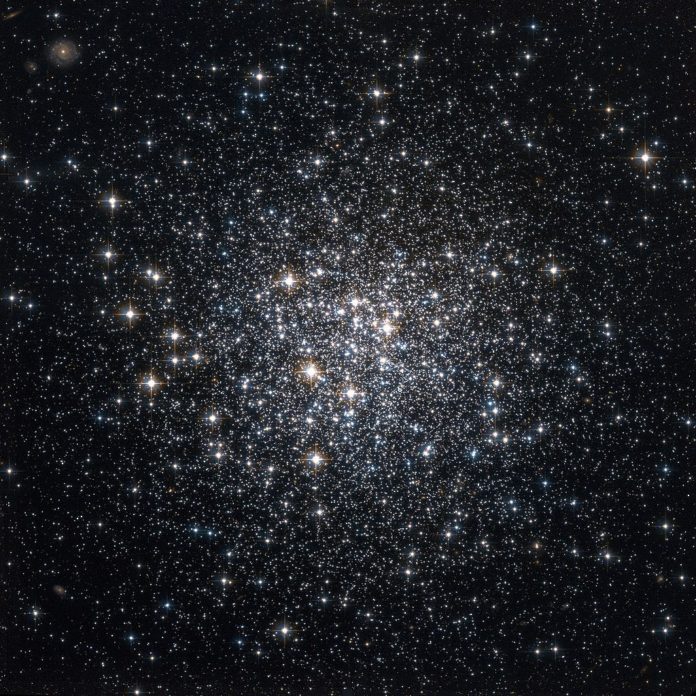The globular cluster NGC 6981 appears small and faint in the sky. It is located about 4° southeast of Epsilon Aquarii (Albali 3.8m) and 10° (a fist width) east of the double star Alpha Capricorni.
In binoculars, it will appear as just a tiny, hazy point of light. This cluster is visible as a faint nebula in a 2.4-inch telescope. In a 4-inch telescope, NGC 6981 looks like a small pale nebulous patch of light. A 6-inch telescope reveals the surrounding field of stars. In an 8-inch telescope, only the extreme edges of the nebula begin to show some resolved stars. A 10-inch telescope is sufficient to resolve the cluster. With a 12-inch telescope the core is resolved, showing a broad spread with darker regions to the south and east.
Discovered in 1780 by Pierre Méchain, it is one of the more remote of Messier’s globular clusters and one of the faintest of the Messier objects, although it is also one of the most intrinsically luminous globular clusters known. It is not very dense; of the Messier objects, only M71 and M56 are less dense. It is a very open globular cluster and is rich in variable stars.
There are at least 100,000 stars in NGC 6981, resulting in a total mass of three to five hundred thousand times the mass of our sun. The brightest star of this cluster has an apparent magnitude of 14.2. NGC 6981 is approaching us at the incredible velocity of 255 kilometers per second.











Hi, this is a comment.
To get started with moderating, editing, and deleting comments, please visit the Comments screen in the dashboard.
Commenter avatars come from Gravatar.
Comments are closed.